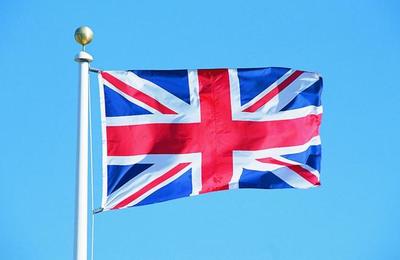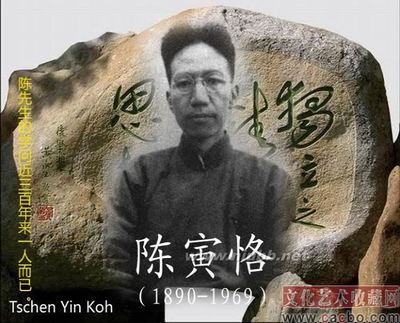辉格党 Whigs
托利派 Tories
改革党 Radical Party
英国保守党 Conservative Party
英国自由党 Liberal Party
爱尔兰议会党 Irish Parliamentary Party
英国工党 Labour Party
英国社会民主党 Social Democratic Party
英国自由民主党 Liberal Democrats
工党和保守党是英国最大的两个党,两党竞争势力此消彼长自由民主党的势力一直都小于工党和保守党。
基本上,只有这三个党是全国性的。 其他都是地方小党。
英国为君主立宪政体,由英王、首相、内阁、议会(分为上下议院)等构成。
其中英王为国家元首,但处于“统而不治”的地位
首相为国家首脑,掌握了行政、立法等权利。
英国的主要党派有工党及民主党。
其中,首相由议院中的多数党的领袖担任,再由首相提名内阁成员,提交英王批准后生效(形式上),所以内阁是与首相共进退的。
如果内阁表示出对首相做的重大决策的不信任,解决办法有:1.首相带领内阁辞职2.解散议会
君主立宪制可以比较有效地分散权力,保证民主的实现,不但英国的资产阶级分享到了国家权力,更为重要的是英国社会获得了政治稳定与经济持续发展的制度保障。从这时起,议会真正掌握着国家的实权,因而它作为最高的国家权力机关的地位更加巩固了。君主立宪制既是英国在政治体制上的创新,也是他对欧洲乃至世界作出的贡献。
英国的代议制民主政治是一种间接民主,不过,它具有更多的弹性、更广泛的包容性和更大的自由度。
有利于缓解日益激化的社会矛盾,促使英国进入一个政治稳定、经济快速发展的时期,顺应了资产阶级民主与法制社会的历史潮流,促进了资产阶级政治文明的发展。对于欧洲、北美地区,以及对于其他英国海外殖民地的政治文明进程都产生了不同程度的影响。
但是首相权力可能过于大(由于首相为多数党的领袖,所以重大决议通常可以通过),无成文宪法,王室逐渐与现代社会脱节,成为附属品与累赘。
英国保守党是世界上历史最悠久的政党之一。二战结束后,从1951—1964年,1970—1974年,1979—1997年,保守党长期单独连续执政。1979—1997年,保守党连续执掌政权18年,创下了自1830年以来其连续执政最久的记录。因此,英国学者把20世纪称为“保守党的世纪”。然而,1997年的英国议会选举对保守党来说可谓是一个沉重的打击。在经历了18年的执政生涯后,保守党被工党赶下了台,而且得票率出奇的低。像在多党竞争体制下运作的大多数政党一样,在大选失败后,保守党首先对自己的组织机构与运作机制进行了反思,并发起了“自本杰明·迪斯勒累以来最深刻的党的体制的变革”,其中最主要的就是党的领袖选举方式和决策机制的变革。一、选举方式的变革由于保守党产生于议会内部派别,之后才在全国发展政党组织,所以政党的活动一直围绕议会内活动展开。议会外的政党组织更多的是充当选举工具。因此,作为议会内政党组织的最高领导以及党执政后的当然首相的保守党领袖,享有很大的权力。1965年前,保守党领袖没有任期,只有在现任领袖死亡、退休或辞职后才需要推选新的领袖。这一时期,保守党领袖也不是选举产生,而是由议会内几个资深议员协商决定一个人选,这个人选必须是下院议员。协商过程很不正式,充满神秘色彩。1965年后保守党领袖改由保守党下院全体议员投票选举,并经由党的会议正式批准。但这一改革只是向民主迈出了不太大的一步。1997年大选败北后,保守党认为党组织分裂是选举失利的重要原因。由于党的领袖由议会议员选举产生,选区党组织和普通党员都没有发言权,这实际上把保守党分割为议会内政党组织与议会外政党组织两个部分,政党领袖也只是议会内政党组织领袖,缺乏对全党的权威。为了改变这种状况,树立领袖对全党的权威,自1998年起,保守党领袖的最后决定权被赋予全体党员。先由保守党议会议员通过选举把竞选领袖的人选缩减到两名,然后由全体党员根据一人一票制的原则投票选出党的领袖。同时,由于全党都参与到领袖的选举过程中,通过新程序选举产生的保守党领袖也就成为名副其实的全党领袖,从而有助于加强党的团结统一。二、党内决策机制的变革<BR>在1997年前,保守党的政策倡议都要拿到代表大会上进行讨论。在一每年10月召开的年度全国代表大会之前,保守党都会在各地区召开一系列的代表大会。全国代表大会之前举行的这些次级代表大会,给党员提供了批评现行政策和提出替代方案的机会,实际上也为党的领导层和议会内政党组织与议会外政党组织和普通党员之间提供了沟通机会,缓解了两者之间的分歧,也就确保了10月全国代表大会能向公众展示出一个团结统一的保守党。而团结统一的形象无疑是保守党可以连续执政长达18年的重要原因之一。连工党也受到启发,模仿创建了全国政策论坛,可以说复制了保守党的这一决策程序。然而,具有讽刺意义的是,在工党效仿保守党决策机制的时候,保守党这一本该起到良好作用的代表大会机制却失灵了。1992年全国代表大会在欧洲问题上发生的激烈争执验证了这一点。而在欧洲问题上的分歧也是导致保守党在1997年痛失政权的重要原因之一代表大会机制失去功效的原因是多方面的。例如,连续的大选胜利逐渐侵蚀了保守党的自我掌控能力。1987年后,参加次级代表大会的党员人数急剧下降,很多积极参与党的活动的党员只热衷于参加10月召开的全国代表大会。这也就增加了在全国代表大会上发生激烈争执的机会,而且这些争执都会在全国媒体中曝光,严重影响了保守党的形象。1997年大选后对保守党党员情况的调查显示,大部分党员对代表大会表示不满,认为代表大会的范围过于狭窄,只有少数党员代表可以参加全国代表大会,而党需要听到更多党员的政策意见。于是,保守党政策论坛应运而生。它反过来复制了工党的全国政策论坛,成立了一个全国协调委员会,被称为委员会。委员会每年会授意政策专家形成6个“文件纲要”,这些文件纲要涉及到人们普遍关注的政策问题。每两个月,就有一个“文件纲要”被散发到保守党选区党组织——选区协会,选区协会有大约3个月的时间组织选区论坛讨论文件纲要。负责政治活动和竞选活动的选区代表主席有责任保证有参与愿望的党员都参与到政策建议的讨论和形成中去。选区代表主席还要鼓励建立选区讨论小组,寻找鼓励政策和政治问题讨论的其他途径。各选区论坛的讨论情况会形成一个报告上交给保守党政策论坛主管。主管由保守党中央理事会(保守党议会外全国党组织、全国联合会的管理机构)任命,负责协调地区政治代表主席的活动。主管还负责保证地区政治代表主席定期集会(每年至少两次)讨论政策,保证选区和地区之间相互吸取彼此的经验。主管对选区报告进行总结,然后递交给负责该项政策领域的影子内阁(在野党为争夺政权而组成的准备上台执政的预备内阁班子)大臣。影子内阁大臣会把答复意见再下发给选区协会。协会论坛可以就答复进行辩论,然后再递交第二份报告。论坛报告的内容是影子内阁大臣在全国代表大会上的发言的重要组成部分。保守党政策论坛会定期对党员进行调查,调查党员对政策论坛的反应,并作出相应的改进。同时,也通过调查来保证党员有许多途径表达他们的观点和意见。除了这些以选区为基础的政策讨论外,保守党政策论坛每年还会在全国范围内举办冬季和春季论坛,使党员有机会向影子内阁成员表达自己的观点,并与影子内阁成员进行交流。冬季论坛和春季论坛为期两天,所有党员都可以自由参加。保守党政策论坛强调让广大的普通党员对政策的形成有发言权。调查显示,保守党的政策论坛确实达到了使广大党员参与政策讨论的目的。如1999年和2000年期间,5000名基层党员参加了论坛,形成了400份政策报告。<BR>虽然普通英国保守党党员对决策仍然没有正式的控制权,但这些变革无疑确实扩大了普通党员对党的重大事务的参与权,从而在一定程度上起到了凝聚党组织、增加党组织的吸引力和活力的作用。
工党是英国两大政党之一。1900年2月由职工大会(即总工会)发起创立,初称劳工代表委员会,由隶属于职工大会的工会组织和费边社、独立工党以及社会民主联盟组成。1906年改称工党。第一次世界大战爆发后,支持政府的战争政策,并加入了自由党的联合内阁。20世纪初,力量日益增强。1918年2月通过了新党章,规定除保留原有的集体党员制度外,还在各选区设立组织以吸收个人党员。同年6月,通过了由韦伯等起草的纲领性声明《工党与新社会秩序》,首次提出要埋葬私有制。1924年1月,在自由党的支持下首次组阁,并从此开始与保守党轮流执政。1945年以前,仅于1923~1924年和1929~1931年两次短期执政。1945年大选至1951年,组织过两届内阁。在此期间,发起重新建立社会党国际。1964~1970年、1974~1979年,先后组织了4届内阁,这是工党历史上执政最长的两次。1979年、1983年、1987年和1990年4次大选连遭失败。工党纲领的传统理论基础是费边社会主义。主张生产资料、分配手段和交换手段的公有制,实行计划管理,以达到公平分配。第二次世界大战后,艾德礼工党政府将此付诸实施,1948年宣布建成福利国家。但50年代开始,随着英国经济的发展,工党内出现意识形态分歧。右派认为,资本主义已经变了,社会主义应是“增加社会福利,实现社会平等”,而不是以实现生产资料公有化为目的;反对以新的社会制度代替现存的社会制度,主张在现存制度基础上追求更高程度的完善。50~60年代,这些思想在工党内占上风。但左派仍坚持国有化,认为没有国有化就没有社会主义。60年代初,“新左派”从文化上批判资本主义,认为资产阶级文化上的统治使人们处在全面异化的状态中,因此,必须向资产阶级发动全面的文化进攻,对资本主义社会实行总体改造。这对70年代后再次活跃起来的工党左派产生了一定的影响,后者据此提出国有化还应该加上工业民主化和生活方式民主化,对工党传统的社会主义进行了补充。1990年5月工党提出新的施政大纲,充实了1989年年会通过的调整政策,放弃了老式国有化政策。主张政府必须负责解决教育、培训、运输、通信等市场无法解决的问题,社会分配先考虑“创造财富的人”,发展高技术经济,鼓励发明创造。在防务政策上,放弃了单方面核裁军的立场,主张用英国的核武器作为核裁军谈判的筹码,争取在2000年消除所有核武器。
工党的组织由领袖、议会党团、议会外组织和总部组成。在野时每年选举领袖,并设副领袖;执政时可不改选,也不设副职。议会党团由下院全体工党议员组成。每届议会开始即选举领袖、副领袖和总督导员。在野时,由领袖、副领袖、下院议会党团主席、上院工党领袖、两院总督导员以及工党议员代表等组成议会委员会,领导议会党团活动。执政时,则由工党内阁代替,另设联络委员会与后座议员保持联系。在议会外,全国代表大会(工党年会)是工党的最高权力机构。下设全国执行委员会、区域会议、选区组织和全国劳工理事会。工党总部是行政机构。党员600余万人,90%以上为工会集体党员,也有部分知识分子,中小资本家,职工大会系该党主要支柱。领袖托尼·布莱尔
Conservative party
Conservative party, British political party, formally theConservative and Unionist party and a continuation of the historicTory party.
The Rise of the Conservative Party
The name “conservative” was used by George Canning as early as 1824and was first popularized by John Wilson Croker in the QuarterlyReview in 1830. The Reform Bill of 1832 (see Reform Acts), whichcreated some 500,000 middle-class voters, marked the advent of thenew party. The 19th-century Conservatives, like their Torypredecessors, were defenders of the established Church of England.They supported aristocratic government and a narrow franchise. Theyattempted, by passing factory acts and moderating the poor law of1834, to ease hardships stemming from the Industrial Revolution,but they had no comprehensive plan to cope with its widespreaddislocations. They were stronger in rural than in urban areas andwere defenders of agricultural interests.
Sir Robert Peel, in his Tamworth Manifesto (1834) and after,attempted to make the party attractive to the new business classesand formed the first Conservative government. But his repeal (1846)of the corn laws brought about an angry reaction from protectionistagricultural interests, led by Lord George Bentinck and BenjaminDisraeli, and resulted in a party split. The “Peelites” eventuallymerged with the Liberal party, and the Conservatives were hamperedby the loss to the Liberals of able young leaders like WilliamGladstone.
From Disraeli to World War I
In the heyday (1846–73) of free trade and anti-imperial sentiment,the Conservatives were out of office, except for three briefministries, until the Disraeli government of 1874–80. Disraeli'sstrong imperialism and his wooing of a br oadened electorate withplans for reform, a program known as “Tory democracy,” wasattractive in a period of depression and increasing imperialcompetition. After the Reform Bill of 1884 campaign, organizationslike the Primrose League and the development of the caucus gave theConservatives greater solidarity and cohesion. They gainedadditional strength as a result of the secession (1886) from theLiberal party of the Liberal Unionists, who, like theConservatives, opposed Home Rule for Ireland. (In 1912 the LiberalUnionists formally merged with the Conservative party.)
The party was in office under the 3d marquess of Salisbury(1885–86; 1886–92; 1895–1902) and Arthur Balfour (1902–5). Effortsby Lord Randolph Churchill to implement further domestic reforms inthe tradition of Tory democracy were unsuccessful, but the popularimperialist emphasis remained. In this period the party wasgradually drawing closer to middle-class business interests, butthe insistence of Joseph Chamberlain on a program of tariff reform,including imperial preference, split the party, which lost (1906)to the Liberals. Conservatives were next in office as part of thecoalition government during World War I.
The Dominant Party
In 1922 the Conservatives refused to continue the coalition formedduring the war, and under Andrew Bonar Law emerged victorious atthe polls. With the Liberals in decline and the Labour party stilldeveloping, the Conservatives entered a period of almost continuoushegemony. They held office from 1922 to 1929, interrupted only by abrief Labour ministry in 1924. They were the dominant power in theNational governments of Ramsay MacDonald (1931–35), Stanley Baldwin(1935–37), and Neville Chamberlain (1937–40). Under the longleadership of Baldwin (1922–37), the party spoke for the interestsof business, the professional and white-collar classes, andfarmers. They lost prestige with Chamberlin's appeasement policytoward Nazi Germany, but the country rallied to his successor, SirWinston Churchill.
Postwar Years
Triumph in war preceded electoral defeat (1945), owing to populardemand for urgently needed social reform, which the Conservativeswould not carry through. Returning to office (1951) underChurchill, the Conservatives displayed a sense of pragmaticmodernity in accepting many of the social reforms instituted by theLabour government. The party's majority in the House of Commons wasincreased in 1955, and Sir Anthony Eden became (1955) primeminister upon Churchill's retirement. Popularity diminishedtemporarily during the Suez Canal crisis, but favorable economicconditions and the political skill of Harold Macmillan, who headedthe government after Eden's resignation (1957), resulted in a solidelectoral victory in 1959. Under the leadership of Sir AlecDouglas-Home, who succeeded Macmillan (1963), the party lostnarrowly to the Labour party in 1964. After that defeat, Lord Homeinstituted a formal balloting system for choosing future partyleaders.
Heath, Thatcher, and Major
In 1965, Edward Heath became the first leader chosen throughelection. Heath led a Conservative government from 1970 to 1974that faced the problems of a stagnant economy and a declininginternational political position. In response, the party moved tocurb the power of trade unions and encouraged more economicself-reliance. In foreign affairs, it continued the policy ofrestricting Great Britain's Commonwealth and international roleswhile expanding ties with Western Europe, as demonstrated byBritain's entry (1973) into the European Community (now theEuropean Union [EU]).
In 1974, the Conservatives lost two elections and Heath wasreplaced as party leader by Margaret Thatcher, the first woman tolead the party. Thatcher was prime minister from 1979 to 1990, thelongest uninterrupted government of the 20th cent. Her governmentdismantled much of Britain's postwar welfare state, and the partybecame identified with free-market economic policies. In 1990,Thatcher's leadership was challenged by members of the party; inthe ensuing elections, she was succeeded by John Major. Under hisleadership, the Conservatives won the 1992 general election. Theparty received a resounding defeat in the 1997 elections, and Majorwas replaced as party leader by William Hague. In 2001 the party,which had come to be seen as anti–European Union, was againtrounced at the polls by Labour, leading Hague to resign. IainDuncan Smith was chosen to succeed Hague but served only two yearsas party leader before he was replaced by Michael Howard. The partymade gains in the 2005 elections, but Labour's majority, thoughreduced, remained secure. Following the elections Howard announcedhis resignation, and David Cameron was chosed to succeed him.
Bibliography
See M. Pugh, The Tories and the People (1985); F. O'Gorman, BritishConservatism (1986); R. Shepherd, The Power Brokers (1991).
Labour Party
Labour party, British political party, one of the two dominantparties in Great Britain since World War I.
Origins
The Labour party was founded in 1900 after several generations ofpreparatory trade union politics made possible by the Reform Billsof 1867 and 1884, which enfranchised urban workers. Although theLabour Representation League, organized in 1869, electedparliamentary representatives, they were absorbed into the Liberalparty. A Marxist organization, the Social Democratic Federation,was founded by H. M. Hyndman in 1881; but more important for thehistory of the Labour party was the founding of the Fabian Society(1883) and the Independent Labour party (ILP; 1893). With the helpof the Fabian Society and the Trades Union Congress, the ILP in1900 set up the Labour Representation Committee, renamed the Labourparty in 1906. The new party elected 29 members to Parliament in1906; in the two elections of 1910 it elected 40 and 42. Itsstrength lay in the industrial North and in Welsh mining areas; theevolutionary socialism espoused by the Fabians was the dominantideology.
1914 to 1945
At the outbreak of World War I, Ramsay MacDonald led a pacifistwing of the party, but the majority of the party supported the wareffort, and the party's leader, Arthur Henderson, served in thewartime coalition governments. Until 1918 the party was distinctlya federation of trade unions and socialist groups and had noindividual members. After the war economic depression, the growingpolitical consciousness of the working classes, and the split inthe Liberal party gave Labour a national following. In 1918, Labourwithdrew completely from the coalition, and in 1922 it became thesecond largest party in the House of Commons and thus the officialopposition.
In 1924 the party formed its first ministry, with MacDonald asprime minister. As Labour was a minority in Parliament and dependedon Liberal support, the enactment of legislation proved difficult,and the government's domestic program of unemployment relief andhousing differed little from that of its Conservative predecessor.Effective primarily in foreign affairs, the ministry recognized theUSSR. The party was turned out of office in Oct., 1924, in anelection marked by Conservative exploitation of the Zinoviev letter(see under Zinoviev, Grigori).
In 1929, Labour formed another minority ministry. MacDonald andPhilip Snowden reacted to the severe depression with conservativeeconomic policies that involved reducing unemployment relief. Whenthe majority of the cabinet refused to accede, MacDonald formed(1931) a coalition government, but he and the Labour leaders whojoined him were expelled from the party. Heavily defeated in theelection of 1931, the Labour party moved slightly to the left,advocating nationalization of major industries and more progressivetaxation. In the next few years Labour found new leaders in ClementAttlee (later Earl Attlee), Herbert Morrison, and ErnestBevin.
In the early 1930s the party passed antiwar resolutions andadvocated collective security through the League of Nations, but itfavored aid to the republican government in the Spanish civil warand eventually came to accept rearmament against the threat fromNazi Germany. After the fall of France to German forces in WorldWar II, Labour agreed to join Winston Churchill's coalitiongovernment; Bevin as minister of labor and Attlee as deputy primeminister, together with other Labour ministers, took charge ofdomestic affairs during the war years.
The Postwar Years
In 1945 the party won an overwhelming electoral victory, and Attleebecame prime minister in Labour's first majority government. Thenew government nationalized the Bank of England, the fuel and powerindustries (coal, electricity, gas, and atomic energy),transportation, and most of the iron and steel industry. It alsoenacted a comprehensive social security system, which included anational health service. In the areas of colonial and foreignpolicy, it granted independence to India and Pakistan, Burma(Myanmar), and Ceylon (Sri Lanka), and allied itself with theUnited States in a strong anti-Communist posture.
Faced with postwar shortages and the problems of reconstruction,Attlee's government encountered severe financial difficulties,despite American assistance. Rationing continued to be a necessity,economic recovery was slow, and the cost of rearmament increasedthe strains on the economy. The government barely maintained itsmajority in the general elections of 1950, and the following yearit was defeated by the Conservatives.
During the long period of opposition that followed (theConservatives were returned to power in 1955 and in 1959), theLabour party argued and almost split on questions of disarmament,aid to developing countries, and furtherance of socialism at home.When Attlee and other elder leaders retired and Hugh Gaitskellbecame party leader, Aneurin Bevan, leading the left wing of theparty, unsuccessfully contested Gaitskell's position. AlthoughBevan was soon reconciled with the party leadership, his supporterscontinued to urge a policy of diplomatic neutralism and unilateraldisarmament, in addition to a strong socialist program. The party'sright-wing, on the other hand, argued that prosperity haddiminished the appeal of socialism to the average worker and thatthe party should adopt a broader, more pragmatic program. Gaitskellconsolidated his position as leader in the early 1960s, and theparty achieved a new solidarity.
The 1960s to the Present
Harold Wilson, who became leader on Gaitskell's death in 1963, wasable to lead the party to victory in 1964. He was prime ministeruntil the Conservative party returned to power in 1970. Wilson'sadministration was marked by a continued decline in Britain'sinternational political and economic position, which gave littleopportunity for social innovation.
After 1970, the Labour party, in opposition, again found itdifficult to present a united front. The reversal of the party'sposition on Britain's entry into the European Community (now theEuropean Union), after having earlier supported it, and a renewedcall for further nationalization of industry were indications of agreater left-wing militancy within the party. The party returned topower as a result of the elections of Feb., 1974, but as a minoritygovernment. Wilson's second administration began renegotiation ofthe terms of Britain's membership in the European Community andannounced plans for large-scale nationalization. Despite continuingeconomic difficulties he called new elections in Oct., 1974, andLabour won a small majority. James Callaghan took over as primeminister following Wilson's resignation in 1976.
The party lost power to the Conservatives under Margaret Thatcherin the 1979 elections and remained in the opposition until the late1990s. Michael Foot became party leader in 1980 but was succeededby Neil Kinnock in 1983. Kinnock led the party to abandon some ofits traditional left-wing positions but proved unable to achievevictory at the polls. He resigned in 1992 after the Conservativevictory in the general elections and was succeeded by John Smith.After Smith's untimely death in 1994, moderate Tony Blair waschosen to lead the party. Under Blair's leadership, the partyformally abandoned traditional socialism in 1995 and subsequentlywon (1997, 2001) consecutive resounding victories at the polls. Theparty's narrower victory in 2005 marked the first time Labour hadthree consecutive national elections.
Bibliography
See H. Wilson, The Labour Government 1964–1970 (1971); B. Jones andM. Keating, Labour and the British State (1985); K. Laybourn, TheRise of Labour (1988).
 爱华网
爱华网



